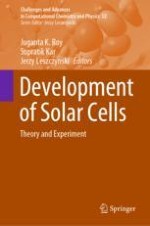This book presents a comprehensive overview of the fundamental concept, design, working protocols, and diverse photo-chemicals aspects of different solar cell systems with promising prospects, using computational and experimental techniques. It presents and demonstrates the art of designing and developing various solar cell systems through practical examples. Compared to most existing books in the market, which usually analyze existing solar cell approaches this volume provides a more comprehensive view on the field. Thus, it offers an in-depth discussion of the basic concepts of solar cell design and their development, leading to higher power conversion efficiencies. The book will appeal to readers who are interested in both fundamental and application-oriented research while it will also be an excellent tool for graduates, researchers, and professionals working in the field of photovoltaics and solar cell systems.
